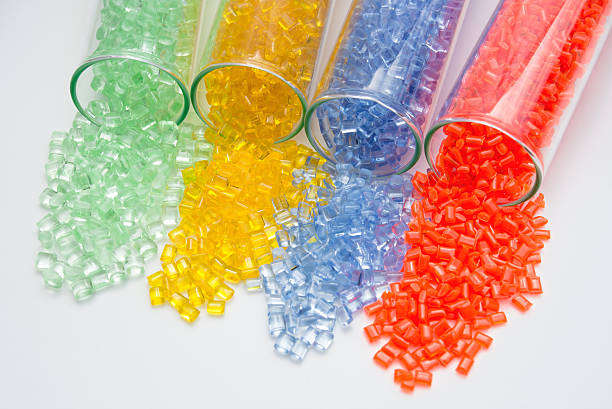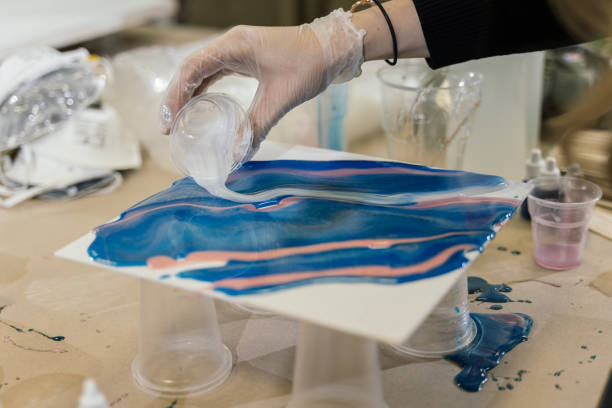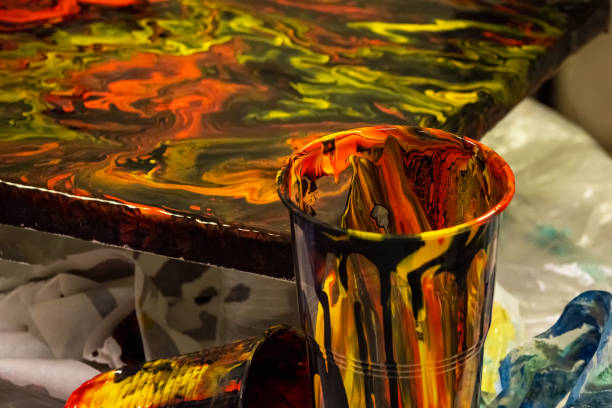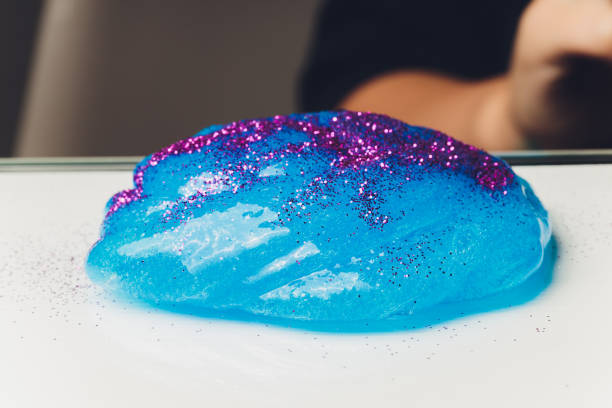As one of the world's most commonly used art mediums, resin art utilizes a liquid polymer that we pour into a mold or onto a surface and then cure to create a solid, clear, glossy finish.
By incorporating pigments, dyes, glitter, and other materials into resin before it sets, resin art helps create depth, dimension, and texture.

You can use several techniques in resin art, including casting, coating, and creating.
Casting involves pouring the resin into a mold, often made from silicone, to create a specific shape or object. This technique can create jewelry, figurines, coasters, and more.
Casting is a popular technique in deep pour casting resin art where casters pour liquid polymer into a mold to create a specific shape or object.
This technique allows for great creativity, as molds can be custom-made or purchased to suit the desired outcome.
To cast resin, you will need the following materials:
- Resin (such as epoxy resin for moulding)
- Hardener
- Mixing cups and stir sticks
- Gloves and eye protection
- Mold (such as a silicone mold)
- Optional: pigments, dyes, glitter, or other materials for color and texture
The Process Of Casting Resin Involves The Following Steps:

Prepare the mold
Clean it and ensure it is free of debris or residue. Add any decorative elements, such as glitter or dried flowers, to the mold if desired.
Mix the resin
Follow the manufacturer's instructions for mixing the epoxy resin for moulding and hardener. Mix the two components thoroughly, and then add any pigments, dyes, or other materials to achieve the desired color.
Make sure you buy epoxy resin dye from a credible source like Craft Resin. They also cater to the best resin casting kit for beginners.
Pour the resin
Carefully pour the mixed resin into the mold, filling it to the desired level. Tap the mold gently to remove any air bubbles.
Curing time
Allow the resin to cure according to the manufacturer's instructions, typically 24 to 72 hours. Avoid disturbing the mold during this time.
Demold
Once the epoxy resin for moulding has cured, gently remove the mold to reveal the cast object. If necessary, use a craft knife or sandpaper to smooth out any rough edges.
The resin casting techniques allows you to create many objects, including jewelry, figurines, and coasters.
Coating

This involves spreading a thin resin layer over a surface, such as a painting, photograph, or wood panel, to create a clear, glossy, and protective coating. People preferably used this technique to give the artwork a professional and finished look.
Coating refers to a thin layer of material applied to the surface of an object for various purposes, such as protection, decoration, or functional enhancement. You can apply coatings to various substrates, including metal, plastic, glass, ceramic, and wood.
There are different types of coatings, including:
Protective coatings
These coatings protect the underlying material from environmental damage, such as corrosion, abrasion, or chemical exposure.
Decorative coatings
These coatings are used to improve the appearance of an object, such as paint, plating, or anodizing.
Functional coatings
These coatings are designed to enhance the performance of an object, such as anti-reflective coatings on optical devices or hydrophobic coatings on surfaces to repel water.
The methods used to apply coatings vary, including brushing, dipping, spraying, and electrodeposition. The coating method choice depends on the coating type, the substrate, and the desired final result.
Creating
This involves adding various materials, such as pigments, dyes, and glitter, to the epoxy resin for moulding before it sets to create a unique and abstract design. This technique often creates stunning abstract and landscape artworks and geode-inspired pieces.
In all cases, working in a well-ventilated area and using gloves and eye protection when working with resin are important. It is also essential to follow the manufacturer's instructions for curing times and mixing ratios to ensure the best possible outcome for your resin art.
Resin art is a type of mixed media art that involves using a clear, viscous liquid resin as a medium to create stunning, glossy, and dimensional pieces. Moreover, you can use resin art on various surfaces, including canvas, wood, stone, and other materials. You can also combine it with other elements such as pigments, dyes, glitter, and other decorative items to create unique and beautiful works of resin art.
The process of creating resin art typically involves the following steps:

Preparation
The surface used for the resin art is cleaned and prepped for the resin application.
Mixing
You can mix the resin with a hardener in the correct proportion according to the manufacturer's instructions.
Adding color and decorative elements
You can add pigments, dyes, glitter, and other decorative items to the resin mixture.
Pouring
Depending on the desired final result, the resin mixture is poured onto the surface, either in a single layer or multiple layers.
Leveling
The surface is leveled using a tool or a heat gun to remove air bubbles and ensure an even, smooth surface.
Curing
The resin is left to cure, which can take several hours to several days, depending on the quantity of the resin.
Finishing
Once the resin has cured, you can sand and polish are you desire to give the finish.
Resin art is a fun and creative hobby that allows you to experiment with color and texture to create stunning, one-of-a-kind pieces.
To buy epoxy resin dye, consider visiting Craft Resin Website.





